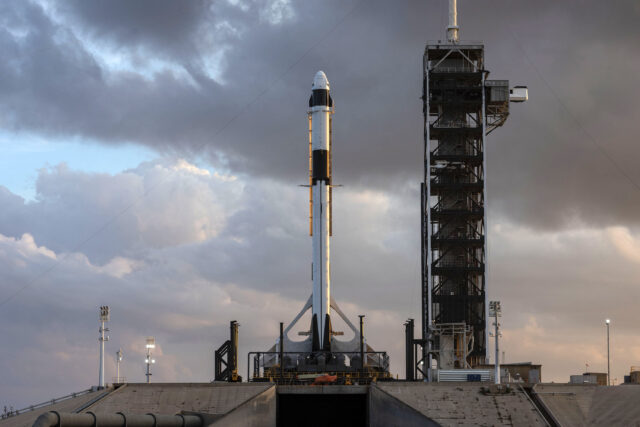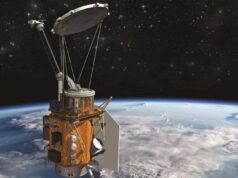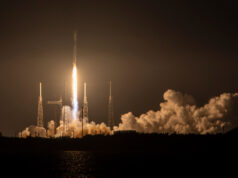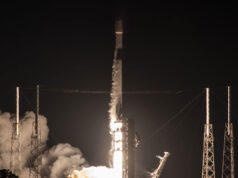
The International Space Station (ISS) is gearing up for an important moment: the departure of SpaceX’s Dragon cargo spacecraft. After being held back by a one-day delay due to less-than-ideal weather conditions at its planned splashdown zone, the robotic Dragon—on its 32nd commercial resupply mission for NASA (CRS-32)—is now aiming to undock on Friday, May 23. This mission is a key step in bringing back valuable scientific experiments and equipment, so it’s definitely one to watch.
The undocking is scheduled for 12:05 p.m. EDT (1605 GMT) on Friday, with live coverage kicking off a bit earlier at 11:45 a.m. EDT (1545 GMT) on NASA+. Once Dragon leaves the station, it will perform a series of deorbit burns to guide it safely back to Earth, aiming for a splashdown off the California coast early Sunday morning, May 25. Unlike the undocking, however, the splashdown won’t be broadcast live.
Why Weather Holds Such Sway Over Spacecraft Returns
The choice to delay Dragon’s undocking from the initial May 22 date really underlines how tricky space operations can be. We often hear about launches making headlines, but returning spacecraft—especially those carrying fragile scientific payloads—is equally, if not more, sensitive. Weather at the splashdown sites matters a lot; rough seas, strong winds, or storms can jeopardize both the spacecraft and the recovery teams waiting to retrieve it.
Mission controllers keep a close eye on multiple potential landing spots, checking wind speeds, wave heights, and storm forecasts. It’s a careful balance—getting the timing just right to ensure everything and everyone comes home safely. This time, the Dragon is set to touch down in the Pacific Ocean, off California’s coast, where conditions have to cooperate perfectly.
Cargo From Orbit: Bringing Back a Treasure Trove of Science
The CRS-32 mission delivered a hefty load of supplies, experiments, equipment, and food to the ISS. Launched on April 21 aboard a SpaceX Falcon 9 rocket from NASA’s Kennedy Space Center, Dragon docked with the station’s Harmony module the very next day, unloading about 6,700 pounds (3,040 kilograms) of cargo.
Now, packed with a rich collection of scientific samples and hardware, Dragon is heading home. Some highlights include:
- MISSE-20 Samples: The Multipurpose International Space Station Experiment exposed a variety of materials to the harshness of space — everything from radiation shielding to solar sails, reflective coatings, and ceramic composites meant for re-entry spacecraft. Researchers are eager to analyze how these materials endured exposure to ultraviolet radiation, atomic oxygen, charged particles, and temperature swings.
- Astrobee Robot: An Astrobee robot, part of the REACCH tech demonstration, is also on its way back. This robot demonstrated an impressive ability to grasp and move objects of different shapes and surfaces using tentacle-like arms and adhesive pads. Such tech could be a game-changer for capturing space debris or even prolonging satellite lifespans.
- Rotational Items: Dragon is also carrying various rotating ISS supplies and non-recyclable materials slated for disposal.
SpaceX’s Unique Role in the ISS Supply Chain
SpaceX’s Dragon stands out because it’s the only operational cargo vehicle that can both deliver to the ISS and bring cargo back to Earth. Unlike other vehicles like Northrop Grumman’s Cygnus or Russia’s Progress—which are designed to burn up in the atmosphere and are essentially one-way—it offers this crucial two-way capability.
This ability is a big deal for scientists on Earth who rely on the safe return of samples and equipment to advance their research into microgravity effects, materials science, and more.
The Journey Home: A Delicate, Precise Dance
Once undocking happens, Dragon will carefully move away from the ISS. SpaceX’s Mission Control in Hawthorne, California, will then guide it through a series of deorbit burns to ensure a controlled, safe re-entry. This whole sequence—from undocking to splashdown—is a finely tuned choreography, where every move counts.
The success of this return is a testament to the ongoing partnership between NASA and SpaceX under the Commercial Resupply Services program. Together, they keep the ISS a bustling orbiting lab, pushing the frontiers of human knowledge and exploration.
If the CRS-32 Dragon undocks and returns safely, it’ll mark yet another milestone for SpaceX and NASA. As space exploration pushes deeper, reliable cargo transport both to and from orbit remains fundamental. The Dragon spacecraft’s unique capabilities are central to today’s ISS operations and set a promising example for future commercial and governmental missions alike.










